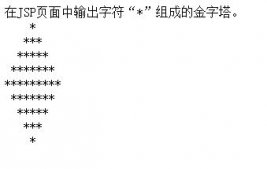1. json-lib是一个java类库,提供将Java对象,包括beans, maps, collections, java arrays and XML等转换成JSON,或者反向转换的功能。
2. json-lib 主页 : http://json-lib.sourceforge.net/
3.执行环境
需要以下类库支持
commons-lang 2.5
commons-beanutils 1.8.0
commons-collections 3.2.1
commons-logging 1.1.1
ezmorph 1.0.6
4.功能示例
这里通过JUnit-Case例子给出代码示例
package com.mai.json;
import static org.junit.Assert.assertEquals;
import java.util.ArrayList;
import java.util.Date;
import java.util.HashMap;
import java.util.Iterator;
import java.util.List;
import java.util.Map;
import net.sf.ezmorph.Morpher;
import net.sf.ezmorph.MorpherRegistry;
import net.sf.ezmorph.bean.BeanMorpher;
import net.sf.json.JSONArray;
import net.sf.json.JSONObject;
import net.sf.json.util.JSONUtils;
import org.apache.commons.beanutils.PropertyUtils;
import org.junit.Test;
public class JsonLibTest {
/*
* 普通类型、List、Collection等都是用JSONArray解析
*
* Map、自定义类型是用JSONObject解析
* 可以将Map理解成一个对象,里面的key/value对可以理解成对象的属性/属性值
* 即{key1:value1,key2,value2......}
*
* 1.JSONObject是一个name:values集合,通过它的get(key)方法取得的是key后对应的value部分(字符串)
* 通过它的getJSONObject(key)可以取到一个JSONObject,--> 转换成map,
* 通过它的getJSONArray(key) 可以取到一个JSONArray ,
*
*
*/
//一般数组转换成JSON
@Test
public void testArrayToJSON(){
boolean[] boolArray = new boolean[]{true,false,true};
JSONArray jsonArray = JSONArray.fromObject( boolArray );
System.out.println( jsonArray );
// prints [true,false,true]
}
//Collection对象转换成JSON
@Test
public void testListToJSON(){
List list = new ArrayList();
list.add( "first" );
list.add( "second" );
JSONArray jsonArray = JSONArray.fromObject( list );
System.out.println( jsonArray );
// prints ["first","second"]
}
//字符串json转换成json, 根据情况是用JSONArray或JSONObject
@Test
public void testJsonStrToJSON(){
JSONArray jsonArray = JSONArray.fromObject( "['json','is','easy']" );
System.out.println( jsonArray );
// prints ["json","is","easy"]
}
//Map转换成json, 是用jsonObject
@Test
public void testMapToJSON(){
Map map = new HashMap();
map.put( "name", "json" );
map.put( "bool", Boolean.TRUE );
map.put( "int", new Integer(1) );
map.put( "arr", new String[]{"a","b"} );
map.put( "func", "function(i){ return this.arr[i]; }" );
JSONObject jsonObject = JSONObject.fromObject( map );
System.out.println( jsonObject );
}
//复合类型bean转成成json
@Test
public void testBeadToJSON(){
MyBean bean = new MyBean();
bean.setId("001");
bean.setName("银行卡");
bean.setDate(new Date());
List cardNum = new ArrayList();
cardNum.add("农行");
cardNum.add("工行");
cardNum.add("建行");
cardNum.add(new Person("test"));
bean.setCardNum(cardNum);
JSONObject jsonObject = JSONObject.fromObject(bean);
System.out.println(jsonObject);
}
//普通类型的json转换成对象
@Test
public void testJSONToObject() throws Exception{
String json = "{name=\"json\",bool:true,int:1,double:2.2,func:function(a){ return a; },array:[1,2]}";
JSONObject jsonObject = JSONObject.fromObject( json );
System.out.println(jsonObject);
Object bean = JSONObject.toBean( jsonObject );
assertEquals( jsonObject.get( "name" ), PropertyUtils.getProperty( bean, "name" ) );
assertEquals( jsonObject.get( "bool" ), PropertyUtils.getProperty( bean, "bool" ) );
assertEquals( jsonObject.get( "int" ), PropertyUtils.getProperty( bean, "int" ) );
assertEquals( jsonObject.get( "double" ), PropertyUtils.getProperty( bean, "double" ) );
assertEquals( jsonObject.get( "func" ), PropertyUtils.getProperty( bean, "func" ) );
System.out.println(PropertyUtils.getProperty(bean, "name"));
System.out.println(PropertyUtils.getProperty(bean, "bool"));
System.out.println(PropertyUtils.getProperty(bean, "int"));
System.out.println(PropertyUtils.getProperty(bean, "double"));
System.out.println(PropertyUtils.getProperty(bean, "func"));
System.out.println(PropertyUtils.getProperty(bean, "array"));
List arrayList = (List)JSONArray.toCollection(jsonObject.getJSONArray("array"));
for(Object object : arrayList){
System.out.println(object);
}
}
//将json解析成复合类型对象, 包含List
@Test
public void testJSONToBeanHavaList(){
String json = "{list:[{name:'test1'},{name:'test2'}],map:{test1:{name:'test1'},test2:{name:'test2'}}}";
// String json = "{list:[{name:'test1'},{name:'test2'}]}";
Map classMap = new HashMap();
classMap.put("list", Person.class);
MyBeanWithPerson diyBean = (MyBeanWithPerson)JSONObject.toBean(JSONObject.fromObject(json),MyBeanWithPerson.class , classMap);
System.out.println(diyBean);
List list = diyBean.getList();
for(Object o : list){
if(o instanceof Person){
Person p = (Person)o;
System.out.println(p.getName());
}
}
}
//将json解析成复合类型对象, 包含Map
@Test
public void testJSONToBeanHavaMap(){
//把Map看成一个对象
String json = "{list:[{name:'test1'},{name:'test2'}],map:{testOne:{name:'test1'},testTwo:{name:'test2'}}}";
Map classMap = new HashMap();
classMap.put("list", Person.class);
classMap.put("map", Map.class);
//使用暗示,直接将json解析为指定自定义对象,其中List完全解析,Map没有完全解析
MyBeanWithPerson diyBean = (MyBeanWithPerson)JSONObject.toBean(JSONObject.fromObject(json),MyBeanWithPerson.class , classMap);
System.out.println(diyBean);
System.out.println("do the list release");
List<Person> list = diyBean.getList();
for(Person o : list){
Person p = (Person)o;
System.out.println(p.getName());
}
System.out.println("do the map release");
//先往注册器中注册变换器,需要用到ezmorph包中的类
MorpherRegistry morpherRegistry = JSONUtils.getMorpherRegistry();
Morpher dynaMorpher = new BeanMorpher( Person.class, morpherRegistry);
morpherRegistry.registerMorpher( dynaMorpher );
Map map = diyBean.getMap();
/*这里的map没进行类型暗示,故按默认的,里面存的为net.sf.ezmorph.bean.MorphDynaBean类型的对象*/
System.out.println(map);
/*输出:
{testOne=net.sf.ezmorph.bean.MorphDynaBean@f73c1[
{name=test1}
], testTwo=net.sf.ezmorph.bean.MorphDynaBean@186c6b2[
{name=test2}
]}
*/
List<Person> output = new ArrayList();
for( Iterator i = map.values().iterator(); i.hasNext(); ){
//使用注册器对指定DynaBean进行对象变换
output.add( (Person)morpherRegistry.morph( Person.class, i.next() ) );
}
for(Person p : output){
System.out.println(p.getName());
/*输出:
test1
test2
*/
}
}
}












